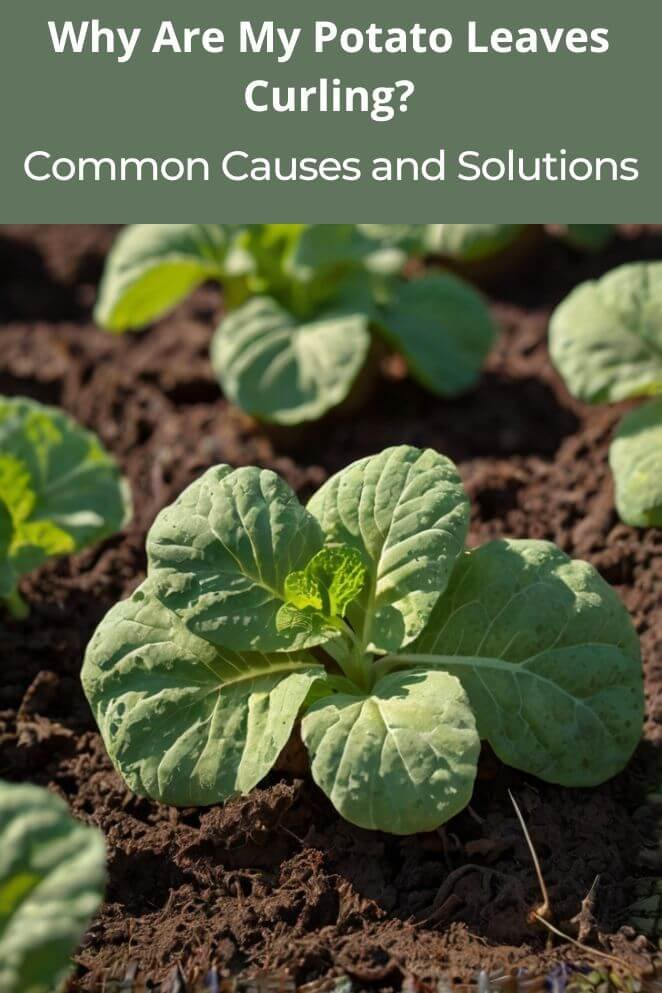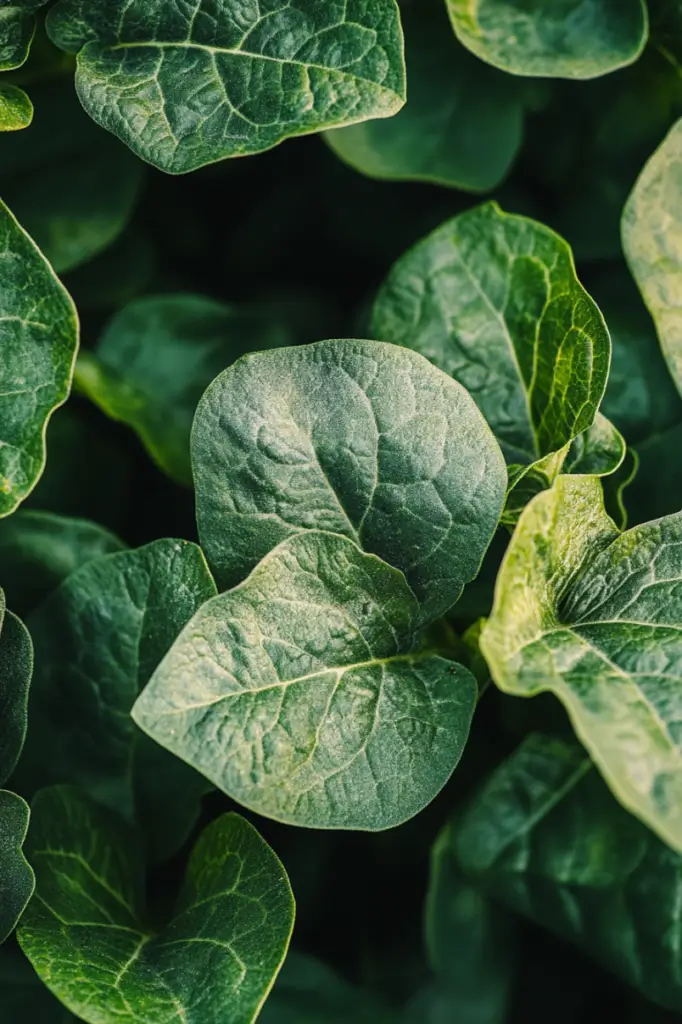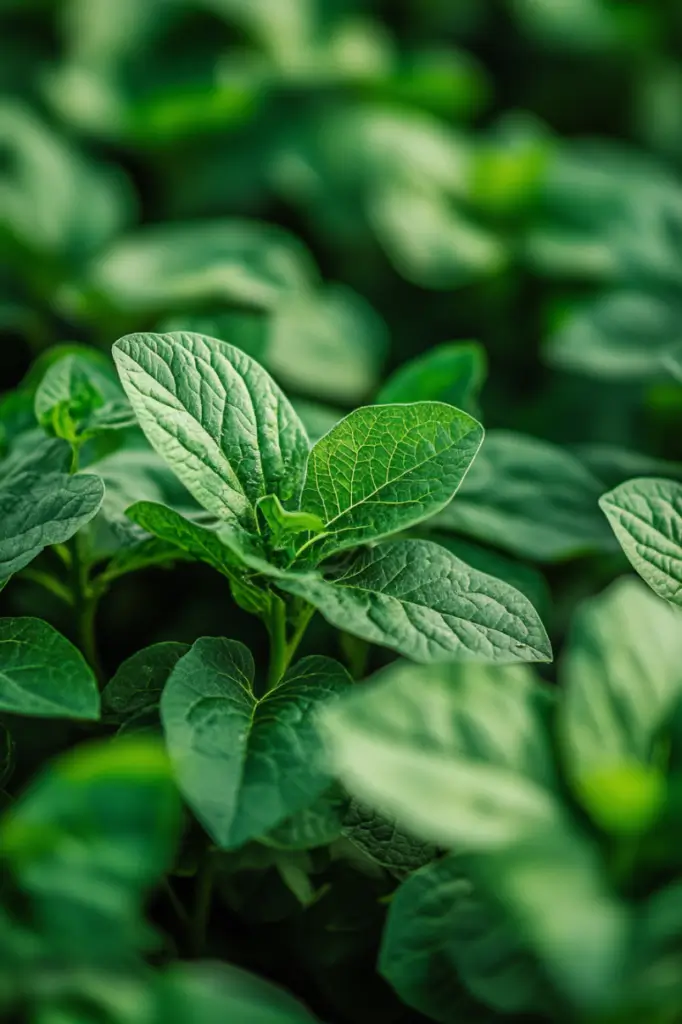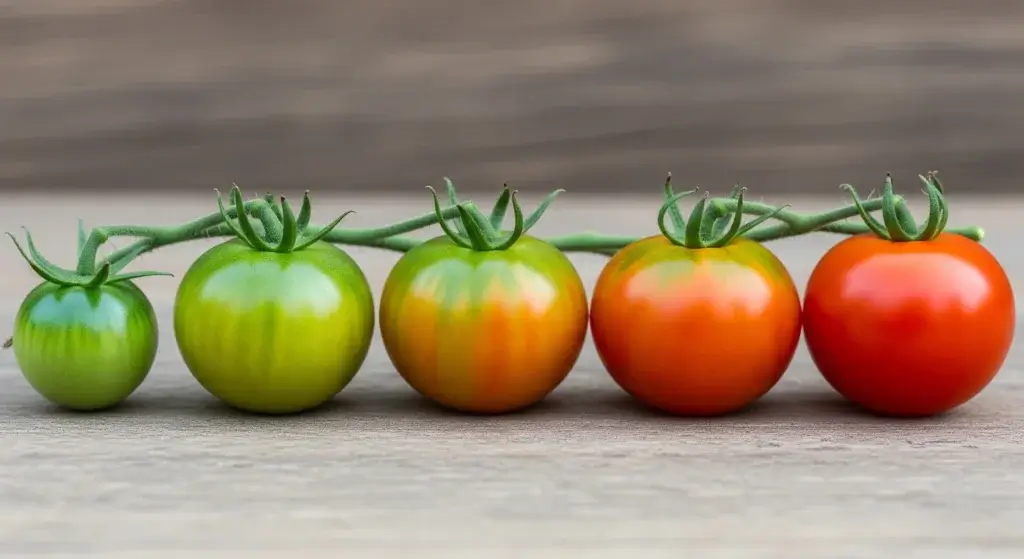
Potato leaves play a crucial role in the health and productivity of your potato plants.
However, when these leaves begin to curl, it can be a sign of an underlying issue that needs to be addressed, from pests and diseases to environmental factors.
In this article, we’ll explore common causes for curling potato leaves and provide tips on how to identify and address the problem.
Why Are Potato Leaves Curling?
Curling potato leaves can be a frustrating problem.
Several factors can contribute to this issue, including:
Environmental stress
One of the most common reasons for curling leaves is environmental stress, particularly due to extreme temperatures, drought, or overwatering.
Potatoes prefer consistent moisture levels and mild temperatures.
When exposed to heat waves or prolonged dry periods, the leaves may curl as a defense mechanism to reduce water loss.
On the other hand, excessive moisture can lead to waterlogged soil, depriving roots of oxygen and causing leaf curling.
Nutrient deficiency
Potatoes need a balanced supply of nutrients to thrive.
A deficiency in essential nutrients, such as nitrogen, potassium, or magnesium, can cause leaves to curl.
Nitrogen is crucial for healthy leaf growth, and a lack of it can lead to stunted growth and curled leaves.
Potassium is vital for overall plant health, including disease resistance and water regulation.
Magnesium deficiency often manifests as yellowing and curling leaves.
Viral infections
Certain viruses, like the Potato Leaf Roll Virus (PLRV) and Potato Virus Y (PVY), can cause leaves to curl up from the outside edge towards the center of the leaf.
This virus is usually transmitted by aphids, and infected plants show upward curling of the leaves, which may also become stiff and leathery.
Another virus like Curly Top Virus can causes leaves to curl downward and become thick.
Viral infections are serious and can significantly reduce crop yield, so early detection is crucial.
Pest infestations
Aphids and other sap-sucking insects can cause potato leaves to curl.
These pests feed on the plant’s sap, weakening it and causing the leaves to distort and curl.
Aphids are particularly notorious for spreading viruses, compounding the problem.
Herbicide damage
If you’ve used herbicides near your potato plants or if there has been drift from nearby fields, your plants might exhibit curling leaves.
Herbicide damage can cause leaves to curl, twist, or become misshapen.
This is often due to the plant’s sensitivity to even small amounts of herbicide.

How to Fix Curling Leaves on Potatoes
Once you’ve identified the cause of the leaf curling, you can take steps to remedy the situation:
Manage environmental conditions
If environmental stress is the culprit, take steps to mitigate it.
Ensure your potatoes are getting consistent watering, especially during dry spells.
Mulching around the plants can help retain soil moisture and regulate temperature.
If your region experiences extreme heat, consider using shade cloth to protect your plants during the hottest part of the day.
Address nutrient deficiencies
Test your soil to determine if your potatoes are lacking essential nutrients.
If you find a deficiency, amend the soil with the appropriate fertilizers.
For nitrogen deficiency, apply a balanced fertilizer or compost to boost growth.
For potassium and magnesium, specific fertilizers or natural amendments like wood ash (for potassium) and Epsom salts (for magnesium) can help.
Control pests
To combat aphids and other pests, consider using insecticidal soap or neem oil.
These treatments can effectively reduce pest populations without harming beneficial insects.
Regularly inspect your plants for signs of infestation, and act quickly if you spot any pests.
Introducing beneficial insects like ladybugs can also help keep aphid populations in check.
Handle viral infections
Unfortunately, there is no cure for viral infections like PLRV.
If you suspect your plants are infected, remove and destroy the affected plants to prevent the virus from spreading.
Practicing good garden hygiene, such as cleaning tools and rotating crops, can help reduce the risk of viral infections in the future.
Avoid herbicide exposure
Be cautious when using herbicides near your potato plants.
If you must use herbicides, do so on calm days to minimize drift.
Consider using physical barriers or planting your potatoes in a location where they are less likely to be exposed to herbicides.

How to Prevent Curling on Potato Leaves
Prevention is always better than cure, especially when it comes to potato leaf curling.
Here are some strategies to keep your potato plants healthy and free from curling leaves.
Proper watering practices
Water your potatoes consistently, providing about 1-2 inches of water per week.
Use drip irrigation or soaker hoses to deliver water directly to the soil, minimizing the risk of fungal diseases that can occur with overhead watering.
Avoid overwatering, as soggy soil can lead to root problems and leaf curling.
Balanced fertilization
Regularly test your soil and amend it with the necessary nutrients.
Use a balanced fertilizer designed for potatoes, and consider incorporating organic matter, like compost, into your soil to improve fertility and structure.
Avoid over-fertilizing, as excessive nitrogen can lead to lush foliage at the expense of tuber development.
Pest and disease management
Implement integrated pest management (IPM) strategies to keep pests at bay.
This includes encouraging beneficial insects, using physical barriers like row covers, and applying organic treatments when necessary.
Rotate your crops each year to reduce the buildup of soil-borne pests and diseases.
Practice garden hygiene
Practice good garden hygiene by cleaning your tools regularly, removing plant debris, and disposing of any infected plants promptly.
Avoid working in the garden when plants are wet, as this can spread diseases.
Careful use of chemicals
If you must use chemicals in your garden, read labels carefully and follow the instructions to avoid harming your plants.
Always apply herbicides on windless days and keep them away from your potato plants.

Conclusion
Curling potato leaves can be a sign of several different problems, but with careful observation and timely intervention, you can address the issue and ensure a healthy potato crop.
By understanding the causes of leaf curling, taking steps to fix the problem, and implementing preventive measures, you’ll be well on your way to growing strong, productive potato plants.



